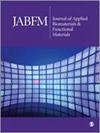用相对论柱面波技术计算铂纳米管:手性诱导自旋选择性
IF 3.1
4区 医学
Q2 BIOPHYSICS
Journal of Applied Biomaterials & Functional Materials
Pub Date : 2023-03-30
DOI:10.35745/afm2023v03.01.0001
引用次数: 0
摘要
利用相对论线性增广柱面波方法计算了手性铂纳米管的电子和自旋性质。自旋轨道耦合引起了费米能区非相对论色散曲线的强烈分裂。上下自旋状态的自旋密度的巨大差异可以用来产生通过小管的纯自旋电流。在Pt (5, n2)和Pt (10, n2)两个系列中,(5,3)和(10,7)纳米管表现出最强的手性诱导自旋选择性效应。本文章由计算机程序翻译,如有差异,请以英文原文为准。
Platinum Nanotubes Calculated Using Relativistic Cylindrical Wave Technique: Chiral Induced Spin Selectivity
Electronic and spin properties of chiral platinum nanotubes are calculated using the relativistic linear augmented cylindrical waves method. The spin-orbit coupling induces the strong splitting of nonrelativistic dispersion curves for the Fermi energy region. The large differences in spin densities of states for spins up and down can be used to create pure spin currents through the tubules. In the two series Pt (5, n2) and Pt (10, n2), the (5, 3) and (10, 7) nanotubes show the strongest chirality-induced spin selectivity effects.
求助全文
通过发布文献求助,成功后即可免费获取论文全文。
去求助
来源期刊

Journal of Applied Biomaterials & Functional Materials
BIOPHYSICS-ENGINEERING, BIOMEDICAL
CiteScore
4.40
自引率
4.00%
发文量
36
审稿时长
>12 weeks
期刊介绍:
The Journal of Applied Biomaterials & Functional Materials (JABFM) is an open access, peer-reviewed, international journal considering the publication of original contributions, reviews and editorials dealing with clinical and laboratory investigations in the fast growing field of biomaterial sciences and functional materials.
The areas covered by the journal will include:
• Biomaterials / Materials for biomedical applications
• Functional materials
• Hybrid and composite materials
• Soft materials
• Hydrogels
• Nanomaterials
• Gene delivery
• Nonodevices
• Metamaterials
• Active coatings
• Surface functionalization
• Tissue engineering
• Cell delivery/cell encapsulation systems
• 3D printing materials
• Material characterization
• Biomechanics
 求助内容:
求助内容: 应助结果提醒方式:
应助结果提醒方式:


